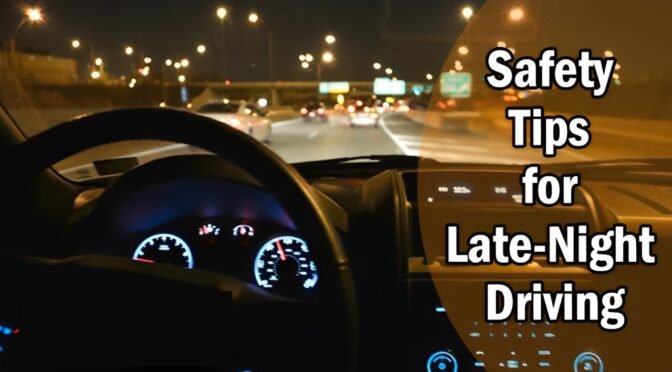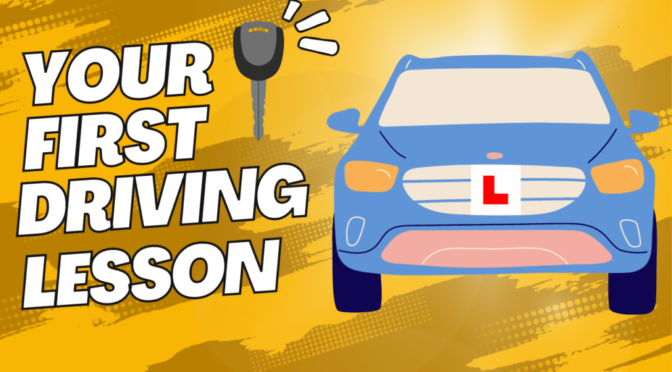Driving on country roads can be an exciting yet challenging experience for learner drivers. The peaceful surroundings, winding lanes, and open countryside might seem relaxing, but these very factors can also increase the risk of accidents. Unlike city streets, rural roads come with blind corners, uneven surfaces, limited signage, and unpredictable obstacles such as animals or farm vehicles. For new drivers, this environment can be intimidating without proper guidance. That’s why joining a Driving School in Gregory Hills becomes essential for anyone looking to build confidence and safety on all types of roads.
Country roads demand a higher level of awareness and sharper driving instincts. Learners who take professional driving lessons in Gregory Hills quickly realize that driving in rural areas isn’t about speed—it’s about precision, patience, and preparedness. A well-trained driving instructor in Gregory Hills teaches students how to anticipate hazards, manage speed, and stay alert in environments where conditions can change within seconds.
Unlike city driving, where traffic signs and streetlights offer visual guidance, country roads rely heavily on a driver’s judgment and experience. Through comprehensive driving classes Gregory Hills, learners gain practical exposure to rural terrains, learning when to slow down, how to position their vehicle safely on narrow lanes, and how to handle sudden obstacles effectively. Whether it’s managing curves or navigating hilly roads, professional instruction ensures every learner develops the confidence to make smart driving decisions.
By understanding the unique demands of country roads, learners trained under expert driving instructors Gregory Hills can embrace the freedom of the open road—safely and responsibly.
1. Understanding the Unique Challenges of Country Roads
Country roads are quite different from the wide, well-maintained roads found in cities. They are often narrower, uneven, and less predictable, which can make driving on them difficult for learners. During driving lessons in Gregory Hills, instructors highlight that rural roads often have no dividing lines, poor lighting, and unexpected turns that require drivers to be alert and cautious at all times. Potholes, gravel, and debris are also common, making it crucial to handle the steering and brakes gently.
Another challenge learners encounter is the lack of clear road signs or speed limit indicators. Driving school Gregory Hills ensures that students understand the importance of reading the road ahead—anticipating turns, intersections, and possible hazards. Rural areas also tend to have wildlife or livestock that may appear suddenly on the road, especially during early mornings or evenings. Learners are taught to slow down and scan the sides of the road for movement, maintaining full control of the vehicle at all times.
Country roads can also deceive new drivers with sudden dips and blind corners. During driving classes Gregory Hills, instructors use practical sessions to teach learners how to approach these safely by slowing down before turns and positioning the car properly for maximum visibility. Additionally, they emphasize maintaining a safe distance from other vehicles, as rural drivers often use varying speeds or may stop abruptly for obstacles.
By focusing on awareness and adaptability, driving instructors Gregory Hills prepare learners to expect the unexpected. This level of preparation ensures that when learners venture beyond the city limits, they can confidently navigate the complexities of rural roads—an essential step in becoming a truly skilled and versatile driver.
2. Managing Speed and Maintaining Vehicle Control
Speed control is one of the most vital aspects of safe driving on country roads. It’s tempting to accelerate when the road ahead looks clear, but rural environments can change rapidly. A curve, pothole, or animal can appear out of nowhere. That’s why driving instructors in Gregory Hills train learners to maintain a balanced speed based on visibility, terrain, and road conditions rather than posted limits alone.
During driving lessons Gregory Hills, students are taught that speed management is not just about driving slowly—it’s about driving appropriately. On winding or slippery surfaces, even moderate speeds can become dangerous if the driver isn’t alert. Learners are encouraged to use engine braking to control descent on slopes and to apply brakes gradually instead of harshly. Smooth steering and consistent acceleration help maintain control on loose gravel or wet surfaces, reducing the risk of skidding.
Driving school Gregory Hills emphasizes the “look ahead” technique—always scanning 10–15 seconds down the road. This allows drivers to anticipate turns, spot obstacles early, and adjust their speed accordingly. Country roads can also feature narrow bridges or passing lanes, and reacting too late can cause serious accidents. The driving classes Gregory Hills curriculum ensures learners understand the importance of adapting speed when encountering oncoming traffic or entering unfamiliar sections of the road.
Learners are also trained to maintain proper lane position and avoid cutting corners, which can be fatal on narrow rural paths. A professional driving instructor Gregory Hills teaches the value of controlled precision over speed, reinforcing that arriving safely is far more important than arriving quickly. Through repeated practice, students gain a natural sense of vehicle balance and control—a skill that remains valuable for a lifetime of driving.
3. Navigating Curves, Hills, and Narrow Lanes
Curvy and hilly terrains are defining features of country roads, and they require skillful handling to ensure safety. At Driving School Gregory Hills, learners are taught that curves must always be approached with caution, as high speeds can cause the vehicle to lose traction or drift into the opposite lane. Instructors train students to slow down before entering a curve and gently accelerate while exiting, allowing the car’s momentum to remain balanced.
Hills present another challenge. Ascending steep inclines requires maintaining a steady throttle to prevent the car from rolling backward, while descending demands controlled braking. During driving classes Gregory Hills, instructors demonstrate the use of lower gears for better control on slopes. Learners practice starting on inclines, managing clutch and brake coordination, and preventing rollback—skills that become second nature with guidance from a professional driving instructor Gregory Hills.
Narrow lanes add another layer of complexity. Often bordered by hedges, fences, or ditches, they leave little room for error. Learners taking driving lessons in Gregory Hills are trained to position their vehicle slightly to the left, providing maximum clearance for oncoming traffic. They also learn to identify safe passing points and when to pull over to allow others to pass. Patience, rather than haste, is the mark of a skilled country driver.
Visibility can also be limited on winding hills and tree-lined roads. Learners are encouraged to use the horn lightly before blind curves to signal their presence to unseen drivers. The Driving School Gregory Hills curriculum integrates these real-world techniques into practical lessons, helping learners become proactive and defensive drivers. By mastering hills, bends, and narrow paths, students gain the confidence to tackle any rural route safely and efficiently.
4. Recognizing Hazards and Practicing Defensive Driving
Country roads are full of unpredictable hazards, from animals and tractors to fallen branches and soft shoulders. A significant part of driving lessons in Gregory Hills involves identifying and responding to such dangers calmly. Defensive driving is not just about reacting quickly—it’s about anticipating problems before they arise. This mindset is at the heart of training provided by Driving School Gregory Hills.
Wildlife collisions are one of the biggest risks on rural roads. Learners are taught to reduce speed at dawn and dusk when animals are most active. Instead of swerving, which can lead to losing control, drivers should brake steadily and stay in their lane. Instructors also remind students to maintain a clean windshield and use low-beam headlights to enhance visibility without creating glare.
The driving instructors Gregory Hills curriculum also focuses on surface awareness. Gravel, mud, or standing water can affect tire traction dramatically. Students learn how to test road grip gently and avoid sudden steering inputs that may cause sliding. Through structured driving classes Gregory Hills, they also practice maintaining a safe following distance—doubling the usual gap when conditions are poor.
Defensive driving also includes anticipating other drivers’ mistakes. Country roads may have locals driving tractors or tourists unfamiliar with the area. Learners are trained to expect sudden stops or wide turns. A calm, alert approach helps prevent collisions. In driving lessons Gregory Hills, students develop habits like scanning intersections early, checking mirrors frequently, and adjusting speed before bends or crests.
By mastering defensive techniques, learners can transform potentially hazardous country drives into safe and enjoyable journeys. The discipline, patience, and foresight taught by a driving instructor Gregory Hills remain invaluable long after obtaining a license.
Conclusion: Master Country Roads with Driving Lessons Gregory Hills
Mastering country road driving is about combining awareness, skill, and confidence—all of which come from quality education. Enrolling in a Driving School Gregory Hills ensures that learners develop these attributes under the guidance of certified instructors who understand the nuances of rural driving. Each driving instructor Gregory Hills tailors lessons to real-world conditions, ensuring that students not only pass their tests but also stay safe beyond it.
The practical driving classes Gregory Hills program helps learners tackle challenges like sharp bends, gravel roads, and unexpected obstacles with ease. Instructors emphasize steady control, anticipation, and defensive thinking—qualities that define a responsible driver. These lessons go beyond technical skills; they build judgment, patience, and adaptability.
Whether you’re just starting your journey or refining your driving abilities, enrolling in driving lessons in Gregory Hills provides a solid foundation for confident driving anywhere—be it city streets or open countryside. With consistent practice and expert mentorship, learners gain the confidence to handle rural terrains safely and independently.
Country roads may be unpredictable, but your preparation doesn’t have to be. Choose Driving School Gregory Hills today to develop the skills that ensure safety, control, and confidence on every road you travel. With the right training, even the most challenging routes become smooth, enjoyable, and secure journeys.
 0405 477 217
0405 477 217




 Enquire Now
Enquire Now







